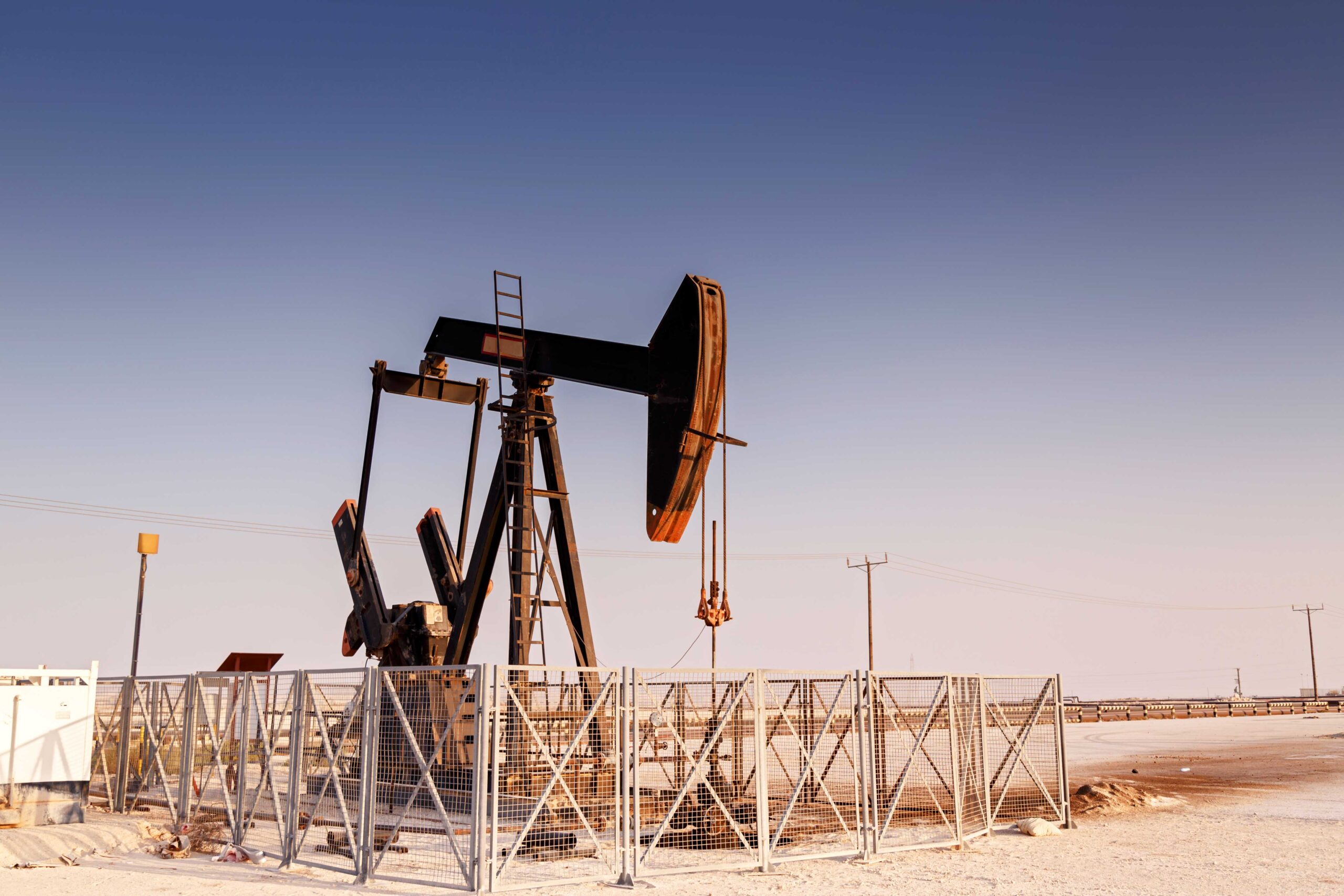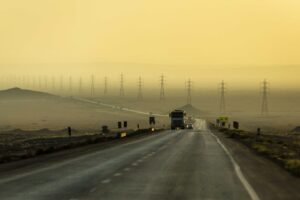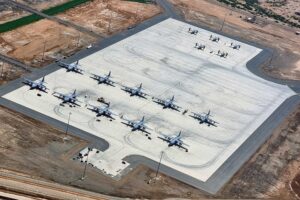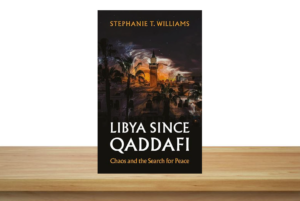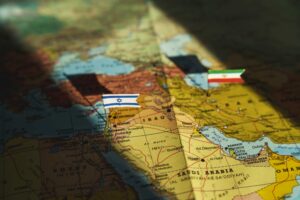The importance of the current unstable situation in the global hydrocarbon markets for the future of the GCC countries is hard to overestimate. The recent increase in prices allowed the Arab monarchies of the Gulf not only to significantly increase their volume of earnings, but also to better understand the ongoing processes of market changes and confirm that their development strategies are probably adequate to respond to the challenges posed by the global energy transition.
So far, the Gulf Cooperation Council (GCC) hydrocarbon producers have received clear evidence that the era of oil and, moreover, gas, is far from being over or coming to an end. The fact that the current crisis was the result of mistakes in assessments regarding the prospects of energy transition as well as the speed of oil demand growth and global economic recovery gave the Saudi and Emirati leadership an important argument that a hasty rejection of oil as the main source of energy is very dangerous. Meanwhile, according to them, the energy transition itself will be a long and difficult process, aggravated by possible economic shocks, if artificially accelerated.[i] This, in turn, is expected to delay the onset of peak oil demand and give enough time for hydrocarbon-producing countries to prepare for the moment when oil demand will decrease. By now, according to OPEC, this moment is far beyond the horizon of reasonable planning: according to the cartel’s estimates, while slowing down, the growth in oil demand will continue, at least, until the early 2030s and subsequent plateauing till 2045.[ii]
The energy transition itself will be a long and difficult process, aggravated by possible economic shocks, if artificially accelerated.
Indeed, the new sustainable energy industry will need time to develop necessary infrastructure for production, transportation, storage and marketing as well as to solve issues related to production costs (which are still quite high), global geographical availability of renewable energy and even to determine the list of energy sources to be considered “green”. Meanwhile, traditional fuels will remain in demand. Moreover, the rejection of oil and gas as feedstock for the petrochemical sector looks even more problematic than the rejection of the use of hydrocarbons for the production of transport fuels and electricity. Consequently, the energy transition, most likely, will not imply a complete rejection of the use of hydrocarbons in favor of sustainable eco-friendly energy sources. Instead, at least at the initial stage, the energy transition will be more focused on how to increase the “environmental friendliness” of traditional oil and gas extraction and processing. Under these circumstances, there is no unanimity among experts on the long-term prospects of the oil market. On the one hand, there are serious concerns that a further underinvestment in the oil sector may fail to meet existing demand.[iii] On the other hand, the market might also be occasionally oversupplied encouraging greater competition between the players.[iv] Interestingly, the oversupply can be caused by both the slow-down in demand growth and underinvestment. The underinvestment will inevitably lead to occasional failures by the oil market to provide sufficient supplies, thus encouraging the periodical rise in prices and making remaining producers develop and pump excessive volumes of oil. Consequently, it is not only the lack of demand, but the potential oversupply of oil that will be the main headache of producers for the next couple of decades.
The energy transition will not imply a complete rejection of the use of hydrocarbons in favor of sustainable eco-friendly energy sources. Instead, it will be more focused on how to increase the “environmental friendliness” of traditional oil and gas extraction and processing.
In this regard, two more trends that emerged during the current crisis may be important for the Gulf oil producers. On the one hand, there is a clear change in the market behavior of one of the main rivals of traditional oil production – shale producers. For a number of reasons, they are clearly abandoning the previously adopted principle of “pumping as much as you can” in favor of a more restrained growth in production. This makes it possible to slow down the onset of market oversaturation in 2022.[v] On the other hand, the struggle for cost reduction will remain one of the main market trends ensuring the hydrocarbon producers’ survival. According to market experts, even during the difficult period of 2019-21, the break-even price of new oil projects continued to decline. Currently, shale industry projects can be considered profitable with the oil price being above $37 per barrel (against $47 in 2018). As for conventional oil, Middle East producers have a particularly advantageous position: their average break-even price was $32 per barrel for continental and $36 for offshore fields.[vi] All this shows that the oil industry can remain profitable even at low prices while also having capacity for speedy recovery under positive market conditions. This trend is very well understood in the Gulf. The leaders of the oil industry in Saudi Arabia and the UAE see the further reduction of costs and break-even production levels a crucial part of their adjustment process to the new market realities. Thus, cost optimization, including through the localization of drilling equipment production, is one of the key targets of the current Abu Dhabi National Oil Company (ADNOC) investment plans.[vii]
 Keep Calm and Pump Oil
Keep Calm and Pump Oil
Under these circumstances, when formulating strategies for the development of their own oil and gas sector, the GCC countries demonstrate greater order and calm than their Western counterparts or international oil companies. The main emphasis continues to be on maximizing the production potential (at least, in the case of the KSA, UAE, Kuwait and Qatar), strengthening the competitive advantages of traditional production and developing domestic petrochemical production as an alternative to direct export of raw materials. This strategy seems to fit in either scenario. If the current industry underinvestment leads to the fall in supply volumes this approach will allow the Gulf producers to acquire the vacated share of the market. If the hydrocarbon market is to be oversupplied, then the maximization of production capacities coupled with low production cost will create substantial advantages for them to win the battle for market share preservation.
At the same time, key Gulf players, such as the KSA, the UAE and Qatar, proceed from at least two principles. First, they believe that, in spite of existing psychological pressure, they still have time to adapt to the global energy transition agenda. Thus, while the leadership of the UAE came out with a “zero emission” program by 2050, which corresponds to the energy development strategies of leading countries, the leadership of the KSA defiantly shifted the deadline for the implementation of a similar program to 2060, showing that the impulses of the rest of the world did not mandate it to change its course quickly or drastically.[viii]
Second, regional producers see the course to dominate key hydrocarbon markets as long-term and unchangeable, and nothing should affect its implementation even and especially under the new conditions. In other words, the Gulf monarchies plan to stay in the game for as long as oil and gas production is still capable of bringing in income even though the markets are to be marked with oversupply and increased competition.[ix] As a result, even when during 2020 to early 2021 there were active discussions among the international business community about the need to stop any further investments in the development of new hydrocarbon deposits, the Saudi leadership was firmly declaring its unwillingness to follow this advice. Moreover, Riyadh stressed that supporters of such a strategy in other states only play in the Saudi interests by weakening the competitiveness of their own companies and voluntarily leaving part of the market. The leadership and business circles of the UAE now also echo their Gulf neighbor, stating that the current program to increase Emirati oil output by 2030 will be fulfilled without looking back at occasional fluctuations in prices and demand for oil as well as trendy theories.[x] In other words, they no longer obey even the old market principle that “lower oil demand/prices means reduced investments in future drilling”. Thus, in November 2021, the head of ADNOC, Dr. Sultan Al Jaber, pointed to the insufficient investments in the development of the oil sector over the past ten years as the main reason for the inability of the oil industry to react to the unexpectedly rapid growth in demand.[xi] In the same month, his company announced an unprecedented $6 billion investment in the development of oil production in order to reach the production rate of 5 million barrels per day by 2030 and achieve self-sufficiency in natural gas production.[xii]
They no longer obey the old market principle that "lower oil demand/prices means reduced investments in future drilling".
The Gulf goes “Green”
Yet, no one in the Gulf is going to ignore the energy transition as well. First of all, it is an opportunity to further diversify the Gulf economies and create new sources of income. With the money received from the oil and gas sector, whole new industries are being created in the GCC to meet new economic realities. The key hydrocarbon producers of the Gulf in one way or another experiment with their potential to enter the hydrogen market. Thus, ADNOC already announced plans to occupy a quarter of the global hydrogen market by 2030.[xiii]
Second, renewables and natural gas will help Gulf countries to maximize the volume of oil available for exports by replacing it domestically. Moreover, the very run for the maximization of export and production capacities is determined by understanding the market changes that energy transition is capable of bringing in the long run. Gulf countries aim to increase the amount of resources that they are able to sell as long as high prices and demand can be guaranteed. The funds received will be used to transform the economies of the Arab monarchies of the Gulf to adapt them to new realities and hedge risks posed by the emerging new energy industries by investing in renewable energy projects abroad.[xiv]
The main plan of Doha remains to increase gas production in order to ensure its leadership in this market.
Third, in some cases, demonstrative support of energy transition ideas is also a convenient marketing move. Thus, in 2021, Qatar Petroleum noisily changed its name to Qatar Energy. The renaming became part of a PR campaign to promote natural gas – Doha’s main source of income – as a fuel that can be used during the global transition from the current “dirty” fuels to the eco-friendly energy sources. At the same time, the trajectory of the company’s development has changed little: the main plan of Doha remains to increase gas production in order to ensure its leadership in this market.
At the same time, the “energy transition agenda” in the GCC does not imply the replacement of the hydrocarbon sector with sustainable energy. Instead, it sees the new industry as a complement that allows both the diversification of the GCC economies and the means of making old industries eco-friendly. For instance, no one in the Gulf rejects plans for the development of petrochemical production, seeing in it an opportunity for convenient and easy diversification of the GCC economies and a response to the question on what to do when oil is not in demand as feedstock for fuel production. As written by oil market analyst Tsvetana Paraskov, “renewable energy could replace more and more fossil fuels in power generation and transportation, but these are not the only industries using oil and gas. From medicine to cosmetics, clothing, and technology, the world will still need oil”.[xv] This is well understood in the Gulf. And this is what the current crisis has perfectly demonstrated, when the growth of prices and demand for hydrocarbons has not always depended on the dynamics of fuel demand. In this vein, GCC countries actually continue to implement their traditional plans for diversification, but with one amendment: they focus on the “greening” of harmful industries through the use of renewable energy sources or pay greater attention to reducing the volume of pollution.
The same applies to the traditional oil and gas sector. Thus, in accordance with the recently announced plans of ADNOC, a targeted transition to the use of electricity obtained exclusively from clean sources – nuclear energy and solar energy – will begin in 2022. Saudi Arabia has also confirmed its plans to make natural gas and renewable energy sources the mainstay of its electricity sector by 2030. The country is implementing a series of programs to form gas production independent of non-extraction and build new green electricity sources designed to increase the volume of renewable energy produced from the current 310 megawatts to 3.67 gigawatts by 2023.[xvi]
It is Not Going to Be That Simple
The economic development model of the leading GCC states is approximately the same. This means that they will not be able to avoid competition with each other.
Of course, the current crisis has also proved that the future of the GCC countries and their oil and gas sector will not be cloudless. One of the main problems will be the growing tensions in the global energy markets. As it has been mentioned, there will be competition between the Gulf countries themselves. The economic development model of the leading GCC states is approximately the same. This means that they will not be able to avoid competition with each other, given approximately the same directions for their exports, visions of sources to fund economic development, as well as the overlapping ambitions regarding the markets of new energy resources. However, the possibility of cooperation cannot be completely excluded. The general attitude of the leading players to increase the volume of oil and gas production makes GCC countries talk about the possibility of implementing joint projects. Recently, the management of the Abu Dhabi National Petroleum Construction Company (NPCC) was debating the company’s ongoing infrastructure projects in the KSA and the possibilities for NPCC to participate in the implementation of Kuwaiti plans to bring oil production to the level of 3.2 million barrels per day by 2025.[xvii]
However, the far bigger challenge for the GCC countries will be represented by growing tensions between them and hydrocarbons – first of all, oil – consumers. On the other hand, the current crisis proved the thesis that reducing the role of OPEC and traditional producers in regulating the oil market was controversial. Yet, on the other hand, it also demonstrated that oil consumers will be gaining more influence on the market as well. With the progress of energy transition and the expected return of frequent market oversupply, it is demand, not supply, that will play an increasingly important role in determining the dynamics of oil and gas prices. An excess of oil on the market is already expected in 2022 while, according to some estimates, by 2030, there may be up to 10 million excess barrels per day on the market.[xviii] Moreover, an attempt by producers to exert pressure on price changes by regulating production volumes will cause an increasingly sharp reaction from consumers. Meanwhile, the expected oversupply and high level of uncertainty in the market will give producers certain levers of influence.[xix] Under these circumstances, it is no surprise that the spring-summer of 2021 restrictions on oil production applied by OPEC+ gave rise only to scattered voices of dissatisfied customers. For example, the Indian authorities actively threatened to diversify oil supplies from the KSA if the kingdom’s authorities continued to restrain production. Yet, by just December 2021, the United States was able to do the unthinkable: they practically persuaded India, China, Japan and South Korea to release additional oil reserves to the market if the cartel did not increase its production volumes to lower world prices. Before that, none of these Asian countries had used their oil reserves for such a global and coordinated price war.[xx] Under these circumstances, maintaining good relations with traditional energy consumers will become increasingly important for GCC suppliers, thus, making them be more flexible when signing long-term contracts and be more interested in the so-called encouragement of demand growth (through investment in consumption infrastructure of oil and gas recipient countries).
Finally…
The current difficult situation in the global energy markets clearly necessitates key oil and gas producers in the Gulf such as the UAE, KSA, Kuwait and Qatar to formulate and apply strategies that are aimed to prepare them for the energy transition era. At their core, these strategies imply the maximization of hydrocarbon output and the preparation for increasing market competition and possible pressure from consumers. Money received from oil and gas production will be used to ensure the further restructuring of the GCC economies towards their growing reliance on sustainable energy sources and decrease in CO2 emissions to meet the needs of new times. However, in the long run, the hydrocarbon production and petrochemical sector will still remain the backbone of the GCC economic structure. The main motive of the Gulf oil and gas producers that is to shape their development plans will be twofold: to hedge their financial sources of incomes through diversification (including through the development of hydrogen export) and to guarantee the longest possible profitability of the traditional oil and gas sector. The success factors in this quest will probably be the reduction of the cost of both hydrocarbon and sustainable energy resources production, the reduction of harmful emissions from traditional industries and the maintenance of the necessary level of investment in both the oil and gas sector and the new energy sources. Recently, the UAE Minister of Energy and Industry Suhail Mohammed Almazroui put this point succinctly: “drop the cost, drop the carbon, maintain the investment.”[xxi]
[i] Demand uncertainty could keep oil from breaking $100 – Oil & Gas Middle East (oilandgasmiddleeast.com); The Energy Transition Will Be Impossible Without Fossil Fuels | OilPrice.com
[ii] The Energy Transition Will Be Impossible Without Fossil Fuels | OilPrice.com
[iii] Global oil supply-and-demand outlook to 2040 | McKinsey
[iv] Breakeven Price For New Oil Projects Drops In 2021 | OilPrice.com
[v] The Real Reason Big Oil Is Refusing To Boost Production | OilPrice.com
[vi] Breakeven Price For New Oil Projects Drops In 2021 | OilPrice.com
[vii] Adnoc Makes $6bn Drilling Awards | MEES
[viii] Saudi Crown Prince Unveils Net-Zero Industrial Hub In Smart-City Neom | OilPrice.com
[ix] Breakeven Price For New Oil Projects Drops In 2021 | OilPrice.com
[x] Abu Dhabi Plans Drilling Ramp Up | MEES
[xi] The Energy Transition Will Be Impossible Without Fossil Fuels | OilPrice.com
[xii] Adnoc Makes $6bn Drilling Awards | MEES
[xiii] Adnoc Looks To The Future With 30GW Renewables Plan | ME… (mees.com)
[xiv] When Will Oil Supply Overtake Demand? | OilPrice.com
[xv] An Undisputable Truth: The World Still Needs Oil And Gas | OilPrice.com
[xvi] Saudi Power Demand Hits New Peak | MEES Saudi Power Demand Hits New Peak | MEES Saudi Power Demand Hits New Peak | MEES
[xvii] Abu Dhabi’s NPCC Capitalizing On Rebounding Gulf Growth… (mees.com) Abu Dhabi Plans Drilling Ramp Up | MEES
[xviii] Breakeven Price For New Oil Projects Drops In 2021 | OilPrice.com
[xix] Breakeven Price For New Oil Projects Drops In 2021 | OilPrice.com
[xx] China Prepares To Release Oil From Strategic Reserve | OilPrice.com; India May Join Coordinated Strategic Oil Reserves Release | OilPrice.com
[xxi] Adnoc Awards Key Sour Gas Contracts | MEES


